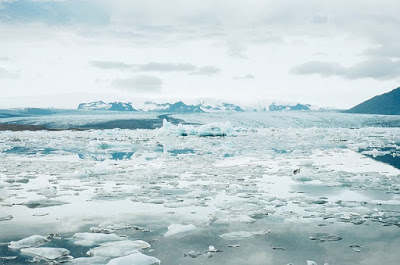 If you thought winters in Antarctica were cold, or liquid nitrogen was fascinating for instantly freezing things, it might be time to think again. Scientists have created something so cold that it is difficult to even comprehend.
If you thought winters in Antarctica were cold, or liquid nitrogen was fascinating for instantly freezing things, it might be time to think again. Scientists have created something so cold that it is difficult to even comprehend.
The feat happened at MIT, and a team there has cooled individual molecules of sodium potassium gas, specifically the molecules, to just above absolute zero. That’s colder than what is thought to have happened after the Big Bang.
The reason for cooling molecules to such mind boggling temperatures helps scientists understand the physics that occur at such extreme temperatures, and what atoms do when they get very, very cold. The scientists pulled it off by taking away the heat of the individual gas molecules of the sodium potassium gas using lasers. It was the first time anything chemically bound had been ever made this cold. The temperature got to as low as 500 nanokelvins. That’s only 500-billionths of a degree above absolute zero. Absolute zero is where nothing can be colder, and there is absolutely no heat left in a substance (that is -459.67 degrees Fahrenheit, or -273.15 degrees Celsius). It’s not possible to get colder than absolute zero.
While the team at MIT used lasers to cool the molecules, they had to use a magnetic field to bring them together. Sodium and potassium don’t form a molecular bond at normal temperatures since they are both positively charged, so bringing them together using the magnetic field under the cold conditions allowed them to see a new, complex molecule that would never form on its own. The result was a molecule that lasted only 2.5 seconds long, but in the world of physics, that is a tremendous amount of time.
The reason for all this cooling of molecules allows scientists to see what quantum mechanics are at play that would never be seen under normal temperatures and conditions. Think of it like hitting pause on a movie to examine the scene. There are all sorts of things you can pick out and discover that would have flown right by at normal speeds. The scientists here are doing essentially the same thing. They’re getting a paused picture of the mechanics of a molecule with the possibility of discovering some new, exotic form of matter.
 |
| Liquid Nitrogen |
More Facts About Really Cold Things
When helium is cooled to a level of 4 Kelvin (-452.2 degrees Farenheit) it takes on a liquid form and when cooled further to 2.17 Kelvin (really cold) it behaves like a superfluid. A superfluid is matter that behaves like a fluid with zero viscosity. In this strange form, liquid helium can appear to self-propel itself and defy the forces of gravity and surface tension. Liquid helium is used in superconducting magnets such as MRI machines, silicon wafer production, arc welding, and cryogenics. The U.S. produces 75% of the world’s helium and 30% of that is held in the U.S. Federal Helium Reserve near Amarillo, Texas. The panhandle of Texas is the prime helium production point in the U.S. and the world and comes about as a byproduct of natural gas production.
Liquid oxygen is also extremely cold, although not near the levels of liquid helium. Its freezing point is 54.36 Kelvin (-361.82 degrees Farenheit) and causes anything it touches to become very brittle. It’s also a strong oxidizer, which means organic material will burn rapidly in liquid oxygen. Liquid oxygen is used extensively in the space program as a propellant and also in the medical field.
Liquid nitrogen comes in third, and boils at a temperature of 77 Kelvin (-195.79 degrees Farenheit). We’ve all probably seen liquid nitrogen in action (think the banana in the liquid nitrogen and when they take it out and are able to smash it to pieces). The slow boiling of liquid nitrogen allows it to hold its very low temperature. Liquid nitrogen is used in many applications, such as a refrigerant, cryotherapy for medical applications, in fire prevention systems, and of course in cryogenics.
To put all this in perspective, the coldest spot ever encountered on Earth took place at Vostok Station in Antarctica on July 21, 1983. The temperature was -128.6 degrees Fahrenheit (184 Kelvin). Other slightly colder temperatures have been remotely sensed by satellites over Antarctica, but these are believed to be below the ice. As you can see this is darn cold, but nowhere near the coldest substance ever created, thank goodness.
Another Cold Story You Might Like:


